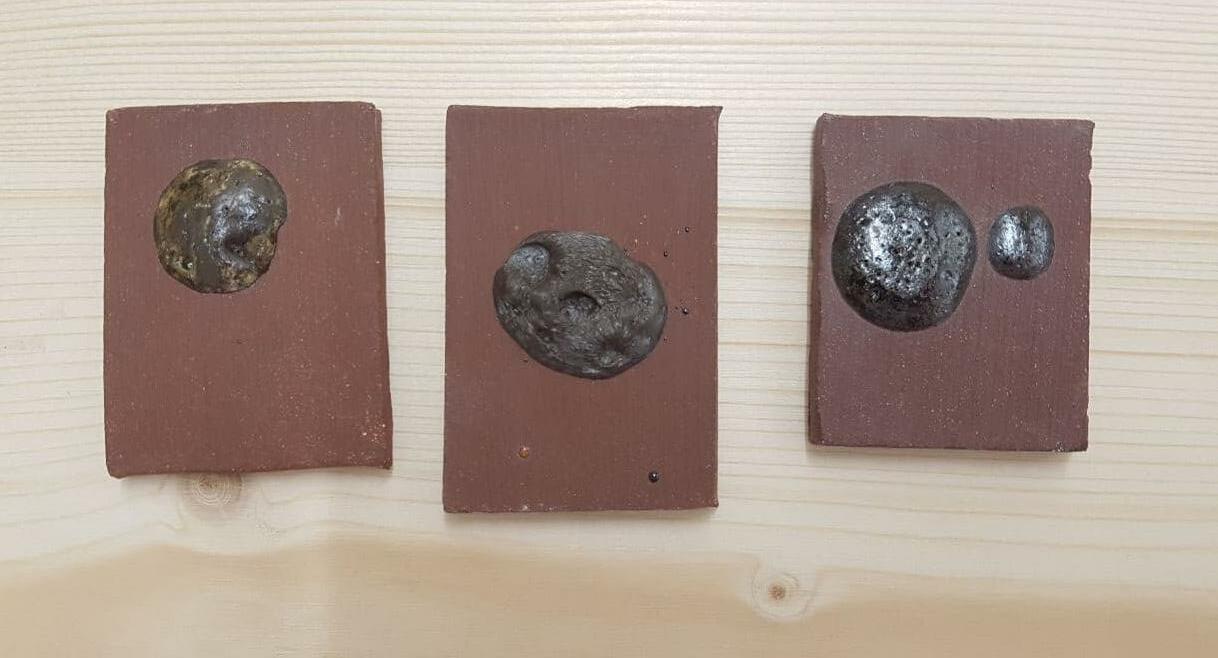
2 minute read
On the clay minerals
from Urban Clay
by mizajn
Manufacturers have also extensively tested and standardized their materials and have not had to do so under semi-amateur conditions. Unexpected results and properties are both a downside and an advantage of wild clay.
The most common, red-firing terracotta, is not very popular among ceramists. At low firing temperatures, the products do not vitrify and remain somewhat porous. Such pottery should be covered with a glaze to make it waterproof and food safe. Historically, glazes designed for low temperatures contained toxic lead. Today, it has been abandoned in favor of frits, a specially industrially formulated glass. A large number of ceramists choose clays that fire light colors because they are a good base for colored glazes since the hues look more pronounced on them. Higher firing temperatures allow for more experimentation with glazes. On the other hand, it’s worth pointing out that a lower furnace temperature equals less energy consumption, lower production costs, and less environmental impact.
Advertisement
Properties of Bacherplatz clay led us to contacting professor Franz Ottner, working at the Institute of Applied Geology at the University of Natural Resources and Life Sciences in Vienna. With his guidance, we conducted the following examinations: particle size distribution through sieving method, sedimentation analysis with Sedigraph, and X-ray diffraction for determining the mineral composition of the clay. We selected three samples of Viennese urban clay for our study. The clay from Karlsplatz as the one excavated
at the construction site in the past, the clay from Bacherplatz as the one excavated now, and the clay from Rothneusiedl, an area which is planned to be further developed in the future.
Figure 12. Samples of clays for analyzing
% Kies % Sand % Schluff % Ton 20259 20260 20261 0.0 2.2 1.0 0.6 2.8 1.3 64.0 52.7 56.7 35.3 42.4 41.0
Table 1. Particle distribution analysis. (Table by Maria Mayrhofer)
Table 2. Total mineral composition of clays. (Table by Franz Ottner)
Gesamtmineralbestand
Alle Angaben in Masse % Labor Nr. Bezeichnung Quarz Schichtsilikate Feldspäte Kalzit Dolomit Gips Pyrit 20259 Karlsplatz 26 54 9 2 7 1 1 20260 Bacherplatz 14 39 4 38 4 nn 1 20261 Rothneusiedl 29 50 12 3 6 nn nn
nn: Nicht nachweisbar Sp: Spuren
In allen Proben sind Spuren von Goethit nachweisbar.
Tonmineralverteilung in der Fraktion < 2µm
Alle Angaben in Masse % Labor Nr. Bezeichnung Smektit Vermikulit Illit Chlorit Kaolinit 20259 Karlsplatz 38 38 12 7 5 20260 Bacherplatz 33 32 20 7 8 20261 Rothneusiedl 51 15 13 12 9
Table 3. Clay minerals distribution. (Table by Franz Ottner)







